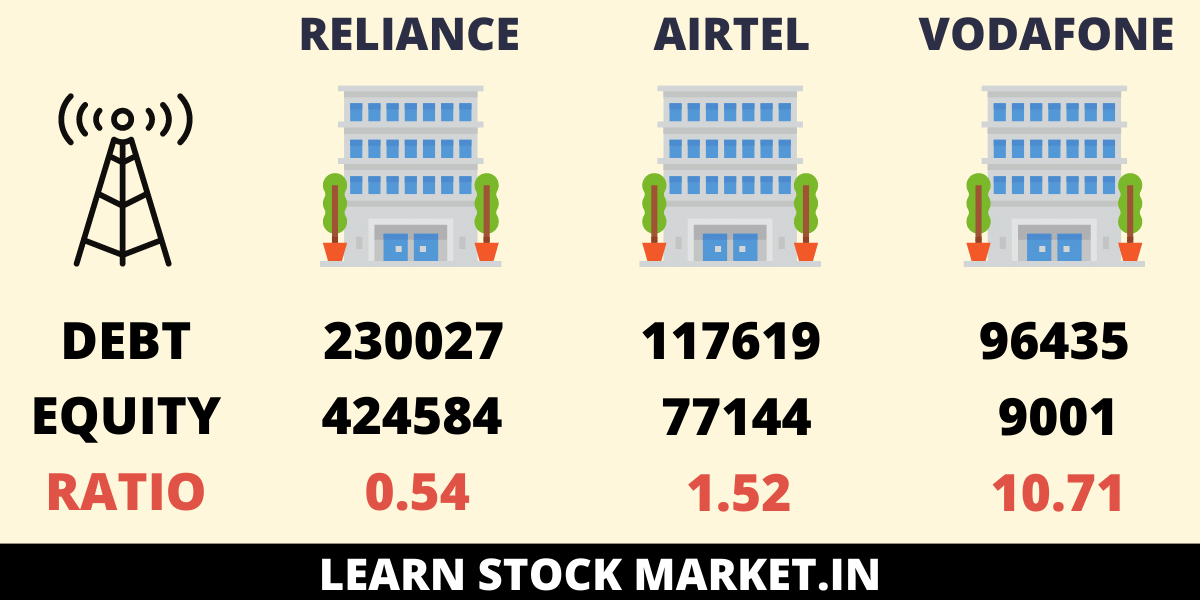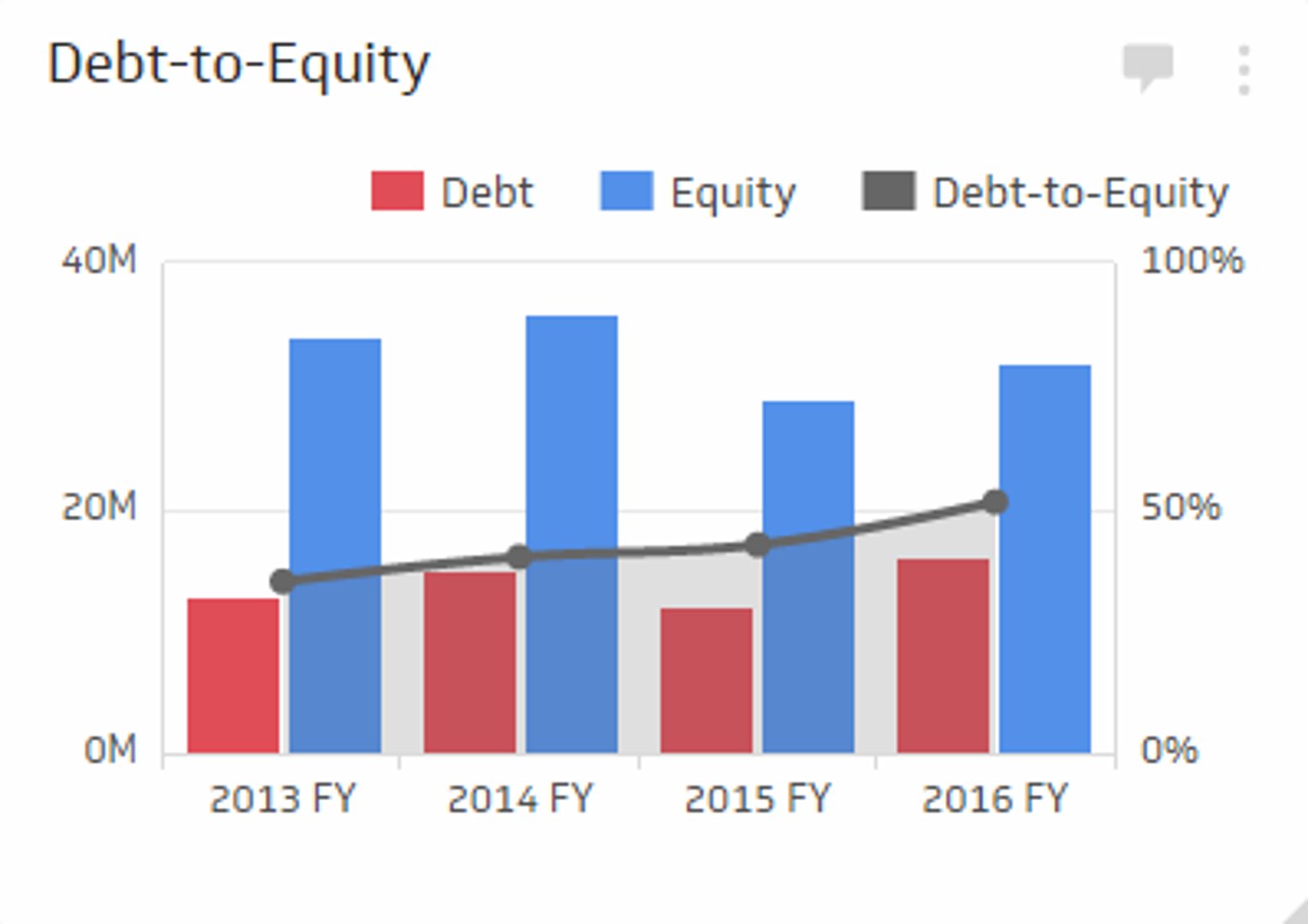
Whether you’re an investor deciding where to put your money or a business owner trying to improve your operations, this number is crucial. The debt-to-equity ratio is one of several metrics that investors can use to evaluate individual stocks. At its simplest, the debt-to-equity ratio is a quick why does accumulated depreciation have a credit balance on the balance sheet way to assess a company’s total liabilities vs. total shareholder equity, to gauge the company’s reliance on debt. A company can reduce its D/E ratio by paying off existing debt, avoiding excessive new debt issuance, and increasing equity through retained earnings or equity financing.
Why You Can Trust Finance Strategists
First, however, it’s essential to understand the scope of the industry to fully grasp how the debt-to-equity ratio plays a role in assessing the company’s risk. This ratio helps indicate whether a company has the ability to make interest payments on its debt, dividing earnings before interest and taxes (EBIT) by total interest. Most of the information needed to calculate these ratios appears on a company’s balance sheet, save for EBIT, which appears on its profit and loss statement. Having to make high debt payments can leave companies with less cash on hand to pay for growth, which can also hurt the company and shareholders. And a high debt-to-equity ratio can limit a company’s access to borrowing, which could limit its ability to grow. But let’s say Company A has $2 million in long-term liabilities, and $500,000 in short-term liabilities, whereas Company B has $1.5 million in long-term debt and $1 million in short term debt.
- In addition, the reluctance to raise debt can cause the company to miss out on growth opportunities to fund expansion plans, as well as not benefit from the “tax shield” from interest expense.
- Another example is Wayflyer, an Irish-based fintech, which was financed with $300 million by J.P.
- Therefore, even if such companies have high debt-to-equity ratios, it doesn’t necessarily mean they are risky.
- A debt ratio of .5 means that there are half as many liabilities than there is equity.
Debt Ratio Formula and Calculation

Investors, creditors, and analysts leverage this ratio to assess a company’s creditworthiness, financial stability, and investment potential. The ideal debt/equity ratio varies across industries and depends on the company’s business model and financial goals. Generally, a D/E ratio below 1 is often considered conservative and indicates that the company relies more on equity financing. A ratio around 1 suggests a balanced capital structure, while a ratio above 1 may signal higher financial risk due to greater reliance on debt.
Q. What impact does currency have on the debt to equity ratio for multinational companies?
The debt-to-equity (D/E) ratio is used to evaluate a company’s financial leverage and is calculated by dividing a company’s total liabilities by its shareholder equity. It is a measure of the degree to which a company is financing its operations with debt rather than its own resources. The debt/equity ratio, also known as the financial leverage ratio or D/E ratio, is a financial metric that measures the proportion of a company’s total debt to its shareholders’ equity.
Debt ratio is a metric that measures a company’s total debt, as a percentage of its total assets. A high debt ratio indicates that a company is highly leveraged, and may have borrowed more money than it can easily pay back. Investors and accountants use debt ratios to assess the risk that a company is likely to default on its obligations. When using a real-world debt to equity ratio formula, you’ll probably be able to find figures for both total liabilities and shareholder equity on a company’s balance sheet. Publicly traded companies will usually share their balance sheet along with their regular filings with the Securities and Exchange Commission (SEC). The debt/equity ratio serves as a critical tool for financial analysis, offering valuable insights into a company’s financial leverage and risk profile.
Cons of Debt Ratio
The company must also hire and train employees in an industry with exceptionally high employee turnover, adhere to food safety regulations for its more than 18,253 stores in 2022. Inflation can erode the real value of debt, potentially making a company appear less leveraged than it actually is. Here, “Total Debt” includes both short-term and long-term liabilities, while “Total Shareholders’ Equity” refers to the ownership interest in the company. It is a problematic measure of leverage, because an increase in non-financial liabilities reduces this ratio.[3] Nevertheless, it is in common use. 11 Financial may only transact business in those states in which it is registered, or qualifies for an exemption or exclusion from registration requirements.
A lower D/E ratio suggests the opposite – that the company is using less debt and is funded more by shareholder equity. However, if the company were to use debt financing, it could take out a loan for $1,000 at an interest rate of 5%. Debt financing is often seen as less risky than equity financing because the company does not have to give up any ownership stake. There are various companies that rely on debt financing to grow their business.
To accurately assess these liabilities, companies often create a debt schedule that categorizes liabilities into specific components. Common debt ratios include debt-to-equity, debt-to-assets, long-term debt-to-assets, and leverage and gearing ratios. Acceptable levels of the total debt service ratio range from the mid-30s to the low-40s in percentage terms. Last, businesses in the same industry can be contrasted using their debt ratios. It offers a comparison point to determine whether a company’s debt levels are higher or lower than those of its competitors. As is the story with most financial ratios, you can take the calculation and compare it over time, against competitors, or against benchmarks to truly extract the most valuable information from the ratio.